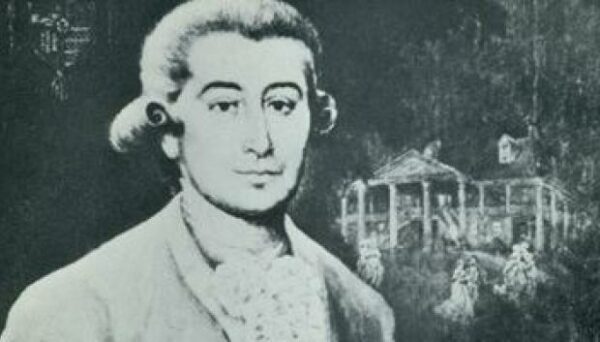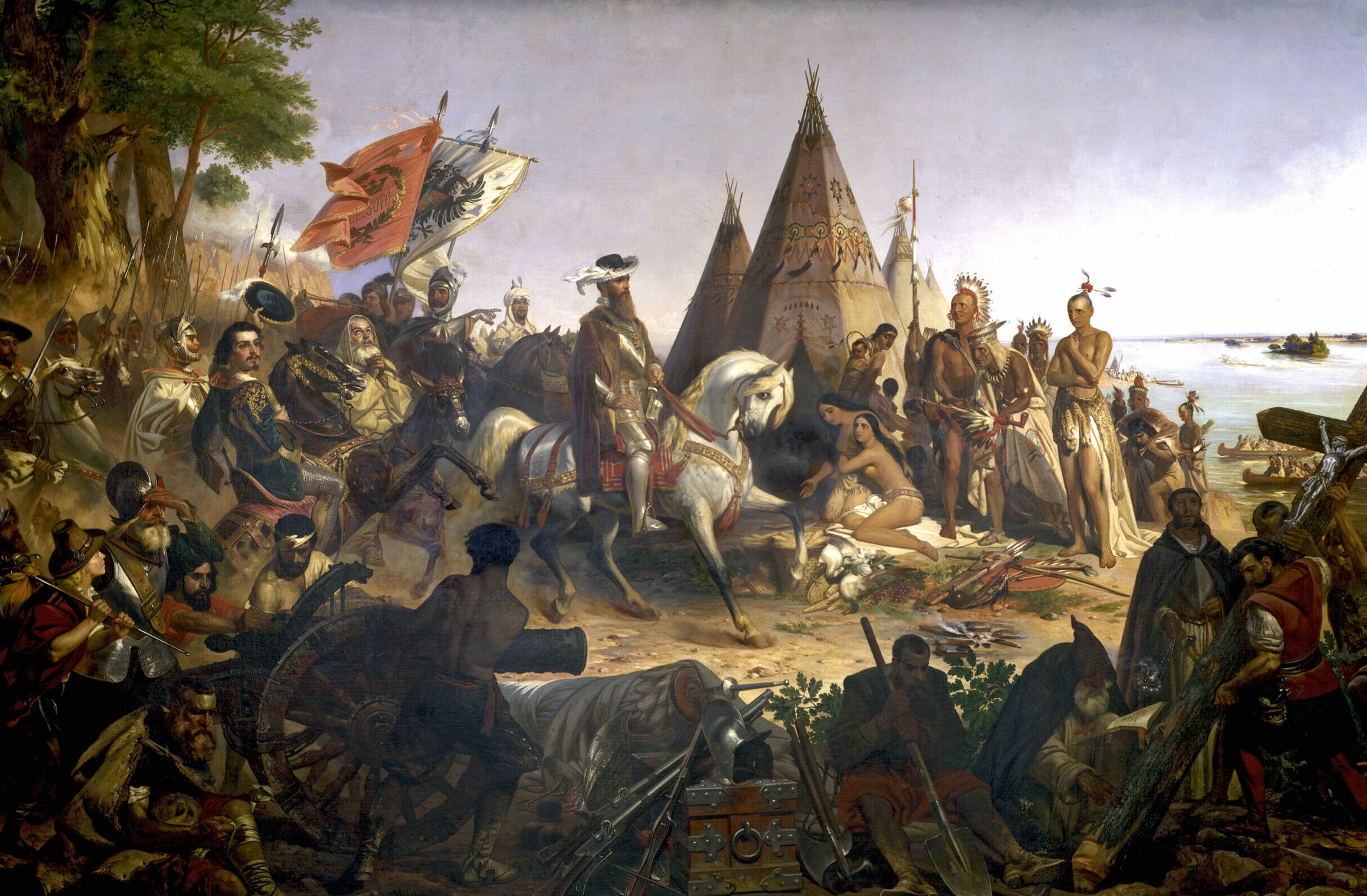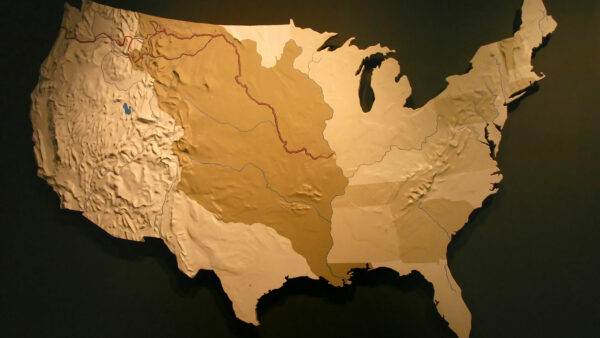Source:El Debate
To him we owe the quadrangular layout of Natchez and its further development, the founding of new colonies and the notable improvements in sanitation and public works.
Manuel Luis Gayoso de Lemos y Amorín was a Spanish soldier whose administration of the Louisiana territory was truly remarkable. An individual of great physical and personal attractiveness, his life, full of adventures and romances, is quite unknown to the general public. He did not have the military skills of some of his predecessors such as Bernardo de Gálvez, nor the enormous knowledge of fortifications of Alejandro O’Really or such noble birth as that of the Baron de Carondelet, but he may have been the most charismatic and the most gallant of the different governors of this immense territory.

Manuel Luis Gayoso de Lemos y Amorín
Gayoso, son of a Spanish diplomat and a Portuguese woman, was born in 1747 in Pontevedra or Oporto, depending on the sources (although he wrote that he felt himself to be from Pontevedra, as it was his father’s homeland). He studied at Westminster, where he became fluent in English and French, languages that would be very useful in the future, and in 1771 he began his military career as a cadet. According to one of his main biographers, Jack D.L. Holmes, he was a very affable person with a “superior” courtesy.
The writer from Pontevedra, Bará Viñas, defines him as “a tall, handsome, educated, passionate, intelligent, womanizer and very rich man”. His military career was very promising. Lieutenant in 1781, captain in 1782 and in 1788 he went on to serve in the Government of Louisiana, where he founded the city of Natchez, near the ruins of an old French fort.
It is necessary to clarify at this point that the Spanish Louisiana was an enormous and very complex territory, it embraced up to 14 states of the current United States, it went from the current state of Louisiana in the south to Canada in the North, in the West it bordered or partially occupied the current states of Texas, New Mexico, Colorado, Wyoming and Montana, what in Spanish times were the provinces of the Viceroyalty of the New Spain of Texas, Santa Fe of New Mexico and Alta California and in the east it was delimited by the Mississippi River.
The arrival to the Viceroyalty of New Spain was sad and very eventful. A great storm almost shipwrecked the ship in which he was traveling, which had to deviate of course and in the following two years one of his daughters and his first wife, the Portuguese Theresa Margarita Hopman y Pereira, died. He would remarry in 1792 with a young woman from New Orleans, Elisabeth Watts, and baely three months later he was widowed again. Some years later he would begin a relationship with Elisabeth’s younger sister, Margaret, whom he would marry in 1798, although it was also rumored that he had a mistress to whom he had given a house in New Madrid, a city founded by Bernardo de Gálvez near the Missouri River.
Gayoso bought a plantation in Natchez, where he built a huge two-story mansion, called Concordia, in the style of the colonial haciendas described in Margaret Mitchell’s book Gone with the wind, and where he offered elegant parties attended by the elites of that vast territory. However, behind that courtly and somewhat frivolous image, an excellent statesman was hidden. To him we owe the quadrangular layout of the city and its further development, the founding of new colonies and the notable improvements in sanitation and public works.
But Louisiana was an immense and tremendously complex territory, on the one hand populated by a multitude of Indian tribes, some even openly hostile to Europeans and Americans, on the other hand, the English pressures in the north, (it must be taken into account that the territory reached areas of present-day Canada, then British territory), in turn the pressure of the newborn United States and its settlers, who sought to expand westward and finally, the pressures of the then allied France that sought to recover a territory that it had administered in the first half of the eighteenth century.
In this difficult card game, the Pontevedra native played his cards with great mastery. Using his personal charisma and diplomatic skills, he managed to conclude numerous treaties with the various tribes. With the Chickasaws and the Choctaws, and he committed himself to defend the lands of the rest of the Indian nations, already agreed in the congresses of Mobile and Pensacola. At the same time, he encouraged the immigration of US-american settlers, especially those of Scottish and Irish origin, to whom he offered land and Spanish nationality, and fortified numerous sites along the Mississippi.
This ensured that both the Indian nations of the territory and the grateful new Anglo-Saxon settlers would fight for the Crown in case of conflict, since both knew that if these territories ended up in US-American hands, as finally happened, Washington, unlike Madrid, would not respect their ownership of the lands.
But this brilliant policy of territorial defense was ruined by Godoy’s inept cessions. Thus, by the Treaty of San Lorenzo of 1795 (also known as the Treaty of Pinckney), Spain ceded its domains north of the 31st parallel, in addition to numerous other cessions that undermined the administration of the territory and ruined the great work of Gayoso, who died of yellow fever in New Orleans in 1799. At least he did not live to see the new betrayal of Charles IV and his servant Godoy who, in 1800, by the Treaty of San Idelfonso, ceded to Napoleonic France the territory of Louisiana, which in 1803, in turn, this country sold to the United States.
It is curious that no Spanish film has echoed that enormous territory in that surprising period, in which Spaniards, Anglo-Saxons and Indians lived together in reasonable harmony, while in a hacienda piano and violin music plays and an attractive, cosmopolitan and polite polyglot governor begins the dance by offering his wife his hand, while on one of the terraces some landowners discuss territorial disputes on the frontier and the peace reached with the Indians. It is a pity that with such an impressive story and such remarkable historical characters we have not been able to publicize them as they deserve. Of course, I guess Spanish cinema is into other things.
Share this article
On This Day
- 1552 Battle of Bicocca.
- 1565 Miguel López de Legazpi founds Cebu as Villa de San Miguel.
- 1806 María Cristina de Borbón Dos Sicilias was born.
History of Spain
26 August 2020
27 January 2021
Communism: Now and Then
23 December 2022
28 July 2021







